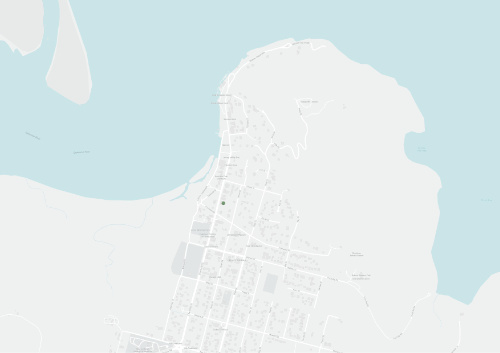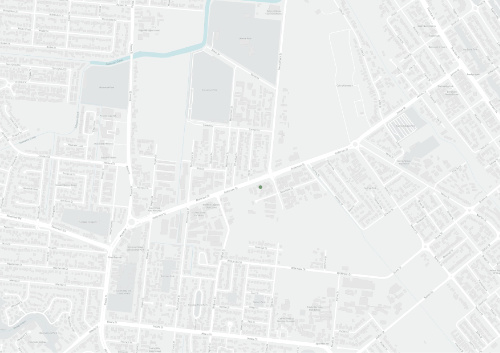Cape York Peninsula is a dream destination, the ultimate road-trip, for people who love four-wheel-driving, fishing and camping. Visitor numbers increase every year, and most take good care of the place. But a small minority are causing problems for other visitors, the region and its people.
Fire
Related Content
A series of resources to promote arson awareness in Cape York.
Words Bianca Barling-Seden | Photo Andrew Hartwig
In recent years, traditional land and fire management has received widespread recognition, capturing government and private-sector interest.
Instructed by an Awu-Laya Elders fire management project in Cape York in 2004, traditional burning has flourished through the National Indigenous Fire Workshop, a community-led initiative supported by Cape York Natural Resource Management.
The flow-on effects of traditional burning are seen from soil conservation and estuary protection through to reef health.
Welcome to our first newsletter for 2021. Some people will be glad to see the back of 2020, but there were many good things to come out of the previous 12 months. During 2020 Cape York NRM was able to restructure its operations and program support so that we are able to deliver the best on ground projects possible and we have an incredibly busy year planned for 2021. We welcome four new staff to the team and the Cooktown office is now bursting at the seams.
Request for ongoing funding of North Australia Fire Information Website (www.firenorth.org.au)
I am writing on behalf of all attendees at the 2019 Cape York Regional Fire Forum, to request your support for the future of the North Australia Fire Information (NAFI) website. Nearly 100 participants at the Forum, representing Indigenous land managers, pastoralists, conservation managers, carbon industry and agency staff, unanimously voted to request that the Queensland and Australian Governments provide funding to ensure that this vital service continues.
Cape York NRM’s Healthy Farming Futures project is supporting a Cape York Wildlife Sanctuary which has so far received over 2,500 mm of rain this wet season, to stabilise the landscape to protect critical habitat.
The North Queensland Threatened Species Symposium will be held on 16-17 February 2021 at the Cairns Colonial Club.
The objective of the Symposium is to increase knowledge exchange and collaboration between organisations and individuals working to conserve threatened species and ecological communities in Northern Queensland.
The symposium will include presentations from the Threatened Species Recovery Hub researchers, and will include workshops focussing on threatening processes that impact the threatened species in our region.
Words and photo Robyn May
‘Manage landscape and all species benefit’ was just one of the many positive comments made during the feedback session following the 2019 Cape York Indigenous Fire Workshop.
This year’s workshop was held in July at Mary Valley and coincided with the school holidays, so lots
of kids were able to attend and learn an array of traditional fire and land management techniques while spending time on Country. This is critical as these children are the land and sea managers of the future.
While unprecedented fires ravage southern Australia, leaders in fire management came together in Cooktown to further their work in managing fire across northern Australia for grazing, biodiversity, greenhouse gas emission reduction and cultural outcomes.
The Cape York Fire Forum, held in Cooktown on 3–4 December, focused on the opportunities and challenges of carbon farming through burning—a process where Australian Carbon Credit units are produced by preventing or reducing greenhouse emissions through planned early dry season burning practices.
The Communities and coastal habitats of eastern Cape York will benefit from the Australian Government’s Reef Trust funded, Catchments to Coral program. Running from 2021–2023, the project will invest in a broad range of activities that focus on improving the health and resilience of eastern Cape York catchments and coastal ecosystems.
It’s been a busy time since the last edition of the Cape York Healthy Country Newsletter. The relaxed COVID- 19 travel restrictions and dry season weather has meant that we’ve been busy out on ground making up for lost time in delivery of projects. We’re continuing to respond to the challenges that COVID-19 has created, and with extra safety in place we’ve managed to get projects underway. Although it’s only September, it feels like the race to the end of the year has begun.
Thanks to funding from a combination of programs, Andrew Hartwig from Cape York NRM recently coordinated aerial burning across a number of Cape York properties.
The early burns were designed to reduce fuel loads and connect fire breaks on a landscape-wide scale, and were carried out by Cape York NRM in partnership with South Cape York Catchments and Cape York Weeds and Feral Animals Inc.
Wetlands on Cape York are very important because they are a filter for water flowing from land to the Great Barrier Reef, they are a refuge and a breeding ground for many different animal species, and also home to many aquatic species, both plants and animals. Some threats to coastal wetlands are feral animals, erosion, pollution, fire, and loss of oxygen in the water from aquatic weeds. Along with the threats comes the problems or issues caused, such as a decrease in native animal and plant species and a decline in water quality.
Land managers from northern Cape York, in a vast area spanning from the western to the eastern coast, came together in July this year to plan a coordinated burn in order to reduce the risk of wildfires. This collaborative project brought together land managers from across the Embley, Mission, Wenlock, Olive and Pascoe catchments.
Recently, grade 12 student Ella Hartwig took on a volunteer position with Cape York NRM to help deliver a coordinated burn project on Cape York. Here’s her record of her experience. Ella’s dad Andrew, known to us all as Andy, is Cape York NRM’s Regional Agriculture Landcare Facilitator (RALF). Andy coordinated the multi-property early burning program in partnership with South Cape York Catchments and Cape York Weeds and Feral Animals Inc.
The Healthy Farming Futures (HFF) program has seen the completion of the 2021 coordinated aerial burning program, and the feral animal control program.
Staff, Andrew and Nat, have visited properties across the Holroyd Plain region, undertaking property planning, discussing project opportunities, updating mapping, and checking in on what’s happening on-ground.
In June and July, the HFF program supported the Cape York coordinated early season burning program, covering 23 properties from as far north as Wolverton Station, to Bonny Glen, south of Cooktown.
Cape York NRM hosted a Soils and Weed Solutions Field Day in Cooktown on 29 February.
The hands-on event, aimed at growers and graziers, explored the latest thinking on sustainable solutions to the ongoing challenge of weed and soil management.
The event brought together members of two Cape York agriculture and grazing networks—the Endeavour and Normanby Mixed Farming and Grazing communities.
2019–2020 has been a big year for the Biodiversity and Fire Program. After a number of staff changes, the team now consists of Biodiversity and Fire Program Manager Kerri Woodcock who is based in Cairns, and Biodiversity Officer Dr Helen Penrose, and Community Engagement Officer Joey Dix who are both based in Cooktown.
Cape York NRM, on behalf of far northern landholders, pastoralists, conservationists and carbon project managers, is calling on the Australian and Queensland governments to continue funding the Northern Australian Fire Information (NAFI) website, a critically important, real time fire coordination tool used by land managers across northern Queensland and the Northern Territory.
Funding for the site, firenorth.org.au, runs out in June.
For tens of thousands of years, Australia’s Indigenous people managed environments with fire, using fire sticks to light carefully timed burns in the right places. That traditional practice now gives its name to the organisation helping to revive it – The Firesticks Alliance.
The revival of traditional Indigenous fire practice began in the 1990s, on Cape York Peninsula in far north Queensland. The early European settlers had discouraged it, and despite efforts to stamp it out, the practice never completely went away.
The traditional burning movement has many supporters and advocates all over Australia.
Talk to any of them and it won’t be long before you hear them mention “Victor”, The man who learned about fire from those two Cape York old fellas, the bloke who does the fire workshops.
Victor Steffensen is a central figure in the revival of Indigenous fire practice.
Contemporary Indigenous fire practice is based on ancient knowledge and culture. But contemporary science proves its effectiveness. Science and traditional knowledge are very different ways of knowing, and the two approaches are still learning to work together. Meet Dean Freeman, whose work puts him right at the intersection of traditional fire practice and contemporary fire and land management methods. Dean Freeman is a Wiradjuri man – he’s the Aboriginal Cultural Fire Officer with the A.C.T Parks and Conservation Service.
Two Kuku Thaypan elders are at the heart of the story of the national revival of Indigenous fire practice. Dr George and Dr Musgrave had long been determined to take care of their country as their culture required, using the right fire at the right time, as their ancestors had done for tens of thousands of years. They overcame legal and bureaucratic obstacles, and inspired a new generation to learn and understand how fire could be a medicine for the earth.
Indigenous fire practice is based on the deep cultural understanding that the right fire at the right time maintains or restores environmental balance. It’s very old knowledge, increasingly supported by contemporary science. As the revival of cultural burning spreads, scientists and land managers are increasingly interested, even though science and traditional knowledge are very different ways of knowing. It’s crucial scientists and academics learn to work appropriately and respectfully with Indigenous people.
Indigenous fire practitioners talk about how fire can be good for country. It’s an idea that confounds European notions of safety and danger, but in the Australian landscape, Indigenous people have always seen fire as a tool, to be used carefully and in the right cultural context. We hear about the start of the revival of traditional fire practice, and meet delegates to the annual National Indigenous Fire Workshop.
We hear from Victor Steffensen, Noel Webster, Dean Freeman, Oliver Costello, Lewis Musgrave, Peta Standley.
This guideline was developed as part of the Department of National Parks, Recreation, Sport and
Racing’s (NPRSR) Queensland Parks and Wildlife Service (QPWS) Fire Management System to support the formation of fire strategies, burn proposals and on-ground planned burn implementation (supported by the Planned Burn Guidelines: How to Assess if Your Burn is Ready to Go). They assist rangers and other land managers to:
This document is to support the re-introduction of an indigenous practical fire management action plan to the Nesbit river area in Cape York Peninsula. The project is a stage one plan that will develop over time with further stages and to encompass more fire managed land in the area. The initial first stage covers the ecosystems along the access road from the Chester River to the main camp on the Nesbit River. The aim of the stage one plan is to burn fire managed ecosystems to protect no fire country types that are threatened by wild late-season fires.
The Pormpuraaw fire management plan was created by the Pormpuraaw Land and Sea Management group on behalf of the Thaayorre and Mungkan Traditional Owners and the Pormpuraaw Aboriginal Shire Council in conjunction with Cape York Sustainable Futures and Firescape Science, to provide various strategies.
Jalunji-Warra Land and Sea Country
(excerpt)
This poster outlines the objectives, location, strategy, planned outcomes, and implementation of the Laura Ranger's Weed Management Strategy.
Caring for Kuku Nyungkal Country
Our vision for our bubu (land)1 is to
-
Maintain our Nyungkal culture, belief, customs and law/lore;
-
Sustain, conserve, and preserve our country, landscapes, waters, mountains and all our cultural sites;
-
Care for our people and their social and economic well being.

